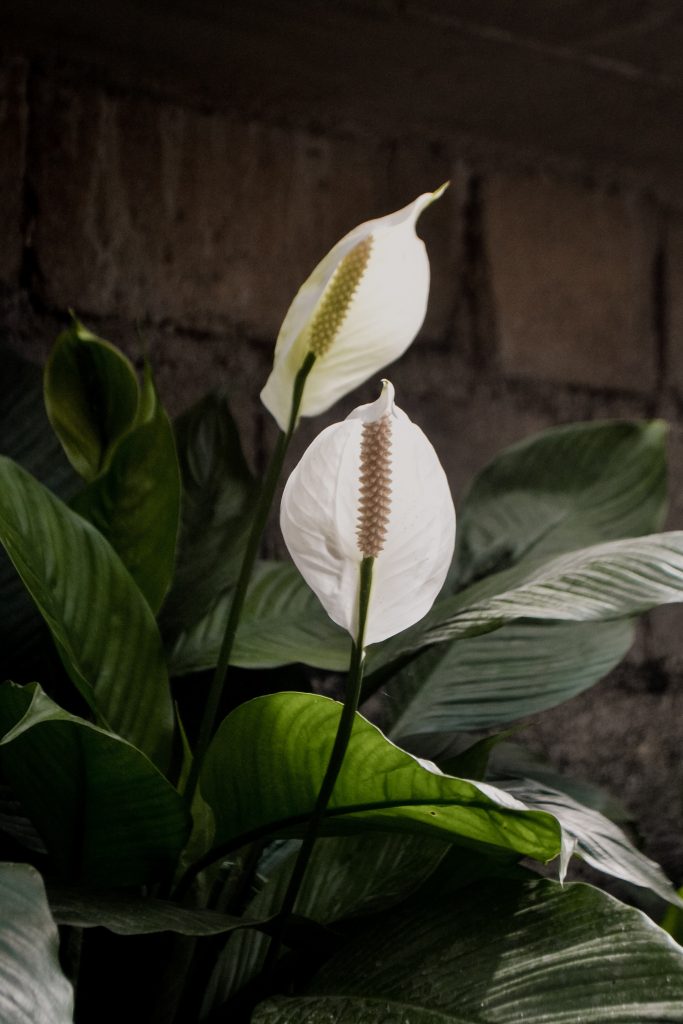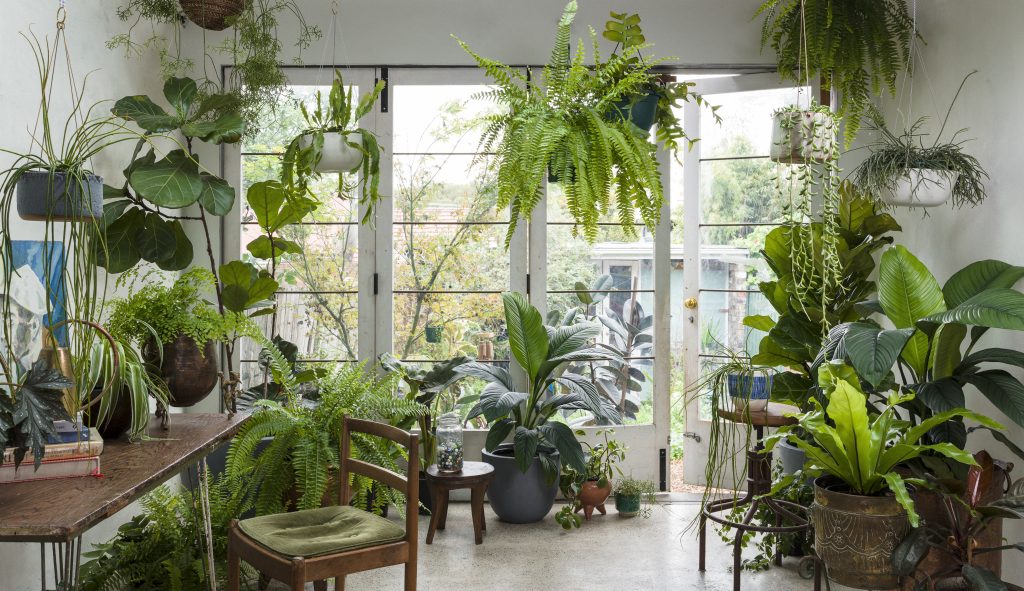
Peace Lily (Spathiphyllum “Mauna Loa”)
It will clean your air and is said to harmonise the energy in your home, so what’s not to love? Although a bit of tender-loving-care is required for this beauty to flower, she is so worth it.
Peace lilies, as the name suggests, are believed in Feng Shui to harmonise the energy of the home and cultivate a calm and relaxing atmosphere. The white lily flower is also a symbol of hope, thought to bring healing to the mind. According to the NASA Clean Air Study (1989), the peace lily also cleans the air in your house of nasty volatile organic compounds (VOCs) from common household features like rugs, carpets and some kinds of building materials.
ORIGIN
Native to Latin American rainforests and commonly found in Colombia and Venezuela, the peace lily is a thirsty, shade-loving, deep green plant that will bring the tropics to you.
In their natural humid rainforest environment, peace lilies receive only dappled sunlight on the forest floor, so indirect sunlight and a regular watering schedule is best when growing them at home. Since bathrooms are the most humid in the house, why not transform your bathroom into an indoor oasis with a peace lily?

CARE
The peace lily is an extremely easy-care plant. To encourage the coveted white lily flower, you’ll need to treat your lily like the delicate creature it is: regular watering with filtered water, quality fertiliser (such as a liquid fish fertiliser) weekly in summer, annual repotting, and gentle cleaning of the leaves with a damp cloth.
Not sure if you’re doing it right? Not to worry – this emotive plant will usually tell you when something is wrong with wilting leaves or discolouring leaves, so work with it and troubleshoot solutions one at a time.
- Is it exposed to too much light? It likes hot environments, but not direct sun. East or north-east parts of your home are ideal, bringing in that glorious morning sun followed by shade.
- Is the soil too dry or too wet? Peace lilies can sustain a dry environment for a short amount of time, whereas being constantly damp can cause problems such as pests and fungus. Peace lilies are also sensitive to chlorine in water, so either use filtered water or let the water stand in an open container for longer than 30 minutes (or even overnight) to let the chlorine evaporate.
- Does it need a feed? Fertilise at half-strength (or double diluted) fortnightly in the summer, but avoid fertilising when it is heat stressed.
- Does it need repotting? Peace lilies need repotting every year or two (preferably in spring), to give the plant access to nutrients from fresh soil and plenty of leg space to spread out. If you’re not sure how big to go with the pot, have a chat with the friendly plant-experts at your local nursery or garden centre.

ANYTHING ELSE I SHOULD KNOW?
Place your peace lily with other humidity and shade-loving indoor plants, such as the tropical calathea and various palms, to give your home that wild jungle vibe.
To keep it looking spic and span, cut out damaged or dead leaves so the plant will place more energy into producing new foliage. To remove a leaf, follow the leaf stem to the base of the plant and simply cut it off.
Lastly, as pretty as she is, she’s not quite cute enough to eat – the leaves contain calcium oxalate crystals which can cause discomfort and irritation if ingested in large quantities, so keep her away from pets and little ones.
Ready to try this classic indoor plant in your own space? Head to your nearest local plant nursery and have a chat with the experts.
